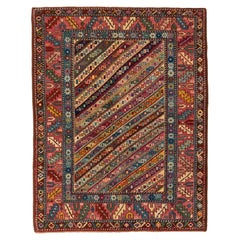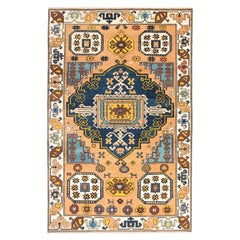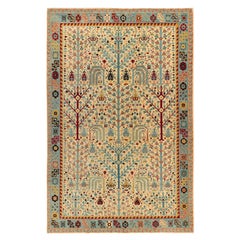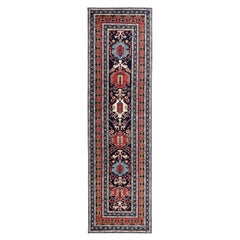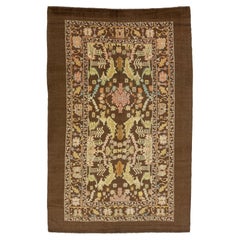Revival Rugs and Carpets
21st Century and Contemporary Turkish Revival Rugs and Carpets
Wool, Natural Fiber, Organic Material
21st Century and Contemporary Turkish Revival Rugs and Carpets
Wool, Natural Fiber, Organic Material
21st Century and Contemporary Turkish Revival Rugs and Carpets
Wool, Natural Fiber, Organic Material
21st Century and Contemporary Turkish Revival Rugs and Carpets
Wool, Natural Fiber, Organic Material
21st Century and Contemporary Turkish Revival Rugs and Carpets
Wool, Natural Fiber, Organic Material
21st Century and Contemporary Afghan Revival Rugs and Carpets
Wool
21st Century and Contemporary Indian Revival Rugs and Carpets
Wool
21st Century and Contemporary Turkish Revival Rugs and Carpets
Wool, Natural Fiber, Organic Material
21st Century and Contemporary Turkish Revival Rugs and Carpets
Wool, Natural Fiber, Organic Material
21st Century and Contemporary Turkish Revival Rugs and Carpets
Organic Material, Natural Fiber, Wool
21st Century and Contemporary Turkish Revival Rugs and Carpets
Wool, Natural Fiber, Organic Material
21st Century and Contemporary Turkish Revival Rugs and Carpets
Wool, Natural Fiber, Organic Material
Early 20th Century Persian Revival Rugs and Carpets
Wool
21st Century and Contemporary Turkish Revival Rugs and Carpets
Wool, Natural Fiber, Organic Material
21st Century and Contemporary Turkish Revival Rugs and Carpets
Wool, Natural Fiber, Organic Material
21st Century and Contemporary Turkish Revival Rugs and Carpets
Wool, Natural Fiber, Organic Material
21st Century and Contemporary Turkish Revival Rugs and Carpets
Organic Material, Natural Fiber, Wool
2010s Indian Revival Rugs and Carpets
Wool
21st Century and Contemporary Turkish Revival Rugs and Carpets
Wool, Natural Fiber, Organic Material
Late 19th Century Persian Antique Revival Rugs and Carpets
Wool
21st Century and Contemporary Turkish Revival Rugs and Carpets
Wool, Natural Fiber, Organic Material
21st Century and Contemporary Turkish Revival Rugs and Carpets
Wool, Natural Fiber, Organic Material
Early 20th Century Persian Revival Rugs and Carpets
Wool
21st Century and Contemporary Turkish Revival Rugs and Carpets
Wool, Natural Fiber, Organic Material
21st Century and Contemporary Turkish Revival Rugs and Carpets
Wool, Natural Fiber, Organic Material
20th Century Turkish Revival Rugs and Carpets
Wool
21st Century and Contemporary Turkish Revival Rugs and Carpets
Wool, Natural Fiber, Organic Material
2010s Turkish Revival Rugs and Carpets
Wool, Natural Fiber, Organic Material
21st Century and Contemporary Turkish Revival Rugs and Carpets
Wool, Natural Fiber, Organic Material
21st Century and Contemporary Turkish Revival Rugs and Carpets
Organic Material, Natural Fiber, Wool
21st Century and Contemporary Afghan Revival Rugs and Carpets
Wool
21st Century and Contemporary Turkish Revival Rugs and Carpets
Wool, Natural Fiber, Organic Material
21st Century and Contemporary Turkish Revival Rugs and Carpets
Wool, Natural Fiber, Organic Material
21st Century and Contemporary Turkish Revival Rugs and Carpets
Organic Material, Natural Fiber, Wool
21st Century and Contemporary Turkish Revival Rugs and Carpets
Wool, Natural Fiber, Organic Material
Late 20th Century Indian Revival Rugs and Carpets
Wool
Mid-20th Century Swedish Revival Rugs and Carpets
Wool
21st Century and Contemporary Turkish Revival Rugs and Carpets
Wool, Natural Fiber, Organic Material
21st Century and Contemporary Turkish Revival Rugs and Carpets
Wool, Natural Fiber, Organic Material
21st Century and Contemporary Turkish Revival Rugs and Carpets
Wool, Natural Fiber, Organic Material
21st Century and Contemporary Turkish Revival Rugs and Carpets
Wool, Natural Fiber, Organic Material
21st Century and Contemporary Turkish Revival Rugs and Carpets
Wool, Natural Fiber, Organic Material
21st Century and Contemporary Turkish Revival Rugs and Carpets
Organic Material, Natural Fiber, Wool
21st Century and Contemporary Afghan Revival Rugs and Carpets
Wool
21st Century and Contemporary Turkish Revival Rugs and Carpets
Wool, Natural Fiber, Organic Material
21st Century and Contemporary Turkish Revival Rugs and Carpets
Wool, Organic Material, Natural Fiber
21st Century and Contemporary Turkish Revival Rugs and Carpets
Wool, Natural Fiber, Organic Material
21st Century and Contemporary Turkish Revival Rugs and Carpets
Wool, Organic Material, Natural Fiber
Early 20th Century Persian Revival Rugs and Carpets
Wool
21st Century and Contemporary Afghan Revival Rugs and Carpets
Wool
21st Century and Contemporary Turkish Revival Rugs and Carpets
Wool, Natural Fiber, Organic Material
21st Century and Contemporary Turkish Revival Rugs and Carpets
Wool, Organic Material, Natural Fiber
21st Century and Contemporary Turkish Revival Rugs and Carpets
Wool, Natural Fiber, Organic Material
21st Century and Contemporary Turkish Revival Rugs and Carpets
Wool, Natural Fiber, Organic Material
21st Century and Contemporary Turkish Revival Rugs and Carpets
Wool, Natural Fiber, Organic Material
21st Century and Contemporary Turkish Revival Rugs and Carpets
Wool, Natural Fiber, Organic Material
21st Century and Contemporary Turkish Revival Rugs and Carpets
Wool, Natural Fiber, Organic Material
21st Century and Contemporary Turkish Revival Rugs and Carpets
Wool, Natural Fiber, Organic Material
21st Century and Contemporary Afghan Revival Rugs and Carpets
Wool
21st Century and Contemporary Afghan Revival Rugs and Carpets
Wool

